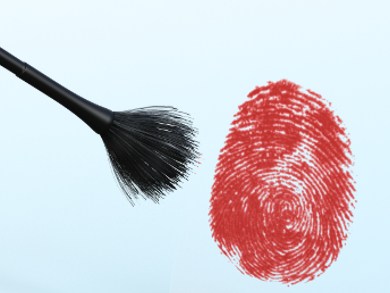Fingerprints play a key role in solving criminal cases. However, fingerprints are often invisible to the naked eye. This results in a demand for methods that visualize these latent fingerprint structures with high selectivity and contrast. Typically, this is done by techniques such as powder dusting, multimetal deposition, or fluorescent dyes. In addition, fluorescent nanostructured materials have recently started to receive attention in this field.
Jung Hyun Jeong, Pukyong National University, Busan, Yun Suk Hu, Inha University, Incheon, Jae Su Yu, Kyung Hee University, Yongin-si, all Republic of Korea, and colleagues have developed a simple hydrothermal procedure that produces a hierarchically nanostructured fluorescent material which allows the high-quality visualization of latent fingerprints. Starting from metal nitrate precursors, ethylenediaminetetraacetic acid (EDTA) as a chelating agent, and urea as a precipitating agent, the team synthesized fluorescent CaGd2ZnO5:Eu3+ using a sequential hydrothermal/calcination route.
The resulting nanorod bundles were water-dispersible and showed better photoluminescent properties than commercially available nitride and Y2O3:Eu3+ phosphors. The researchers demonstrated the material’s high affinity to fingerprint ridges deposited on a variety of samples with different surface properties. A high-quality imaging of latent fingerprints was achieved using digital photography and optical microscopy. The team emphasizes that their material reveals three levels of identification markers, thereby making it possible to identify an individual even if the fingerprints are damaged.
- Evolution of CaGd2ZnO5:Eu3+ nanostructures for rapid visualization of latent fingerprints,
G. Seeta Rama Raju, Jin Young Park, Ganji Purnachandra Nagaraju, E. Pavitra, Hyun Kyoung Yang, Byung Kee Moon, Jae Su Yu, Yun Suk Huh, Jung Hyun Jeong,
J. Mater. Chem. C 2017.
DOI: 10.1039/C7TC00852J


